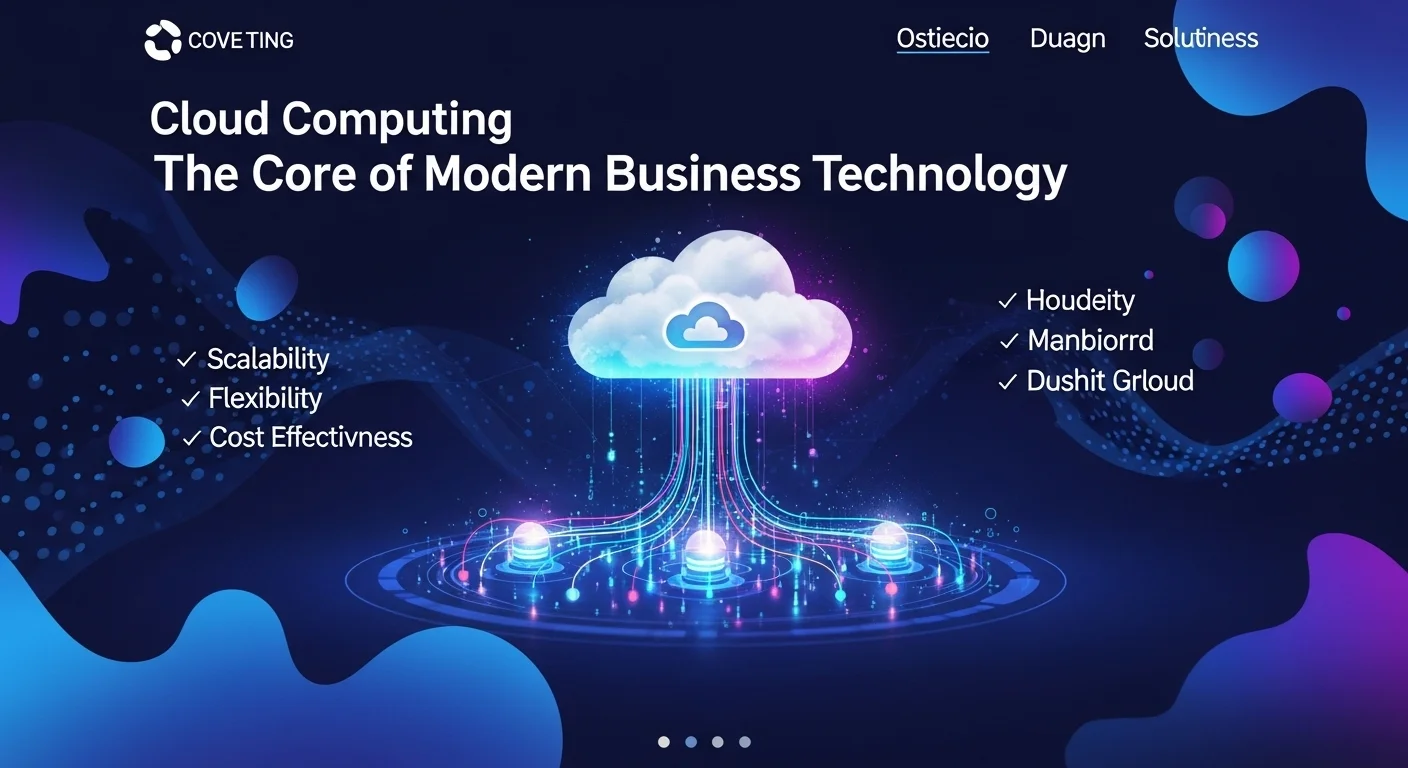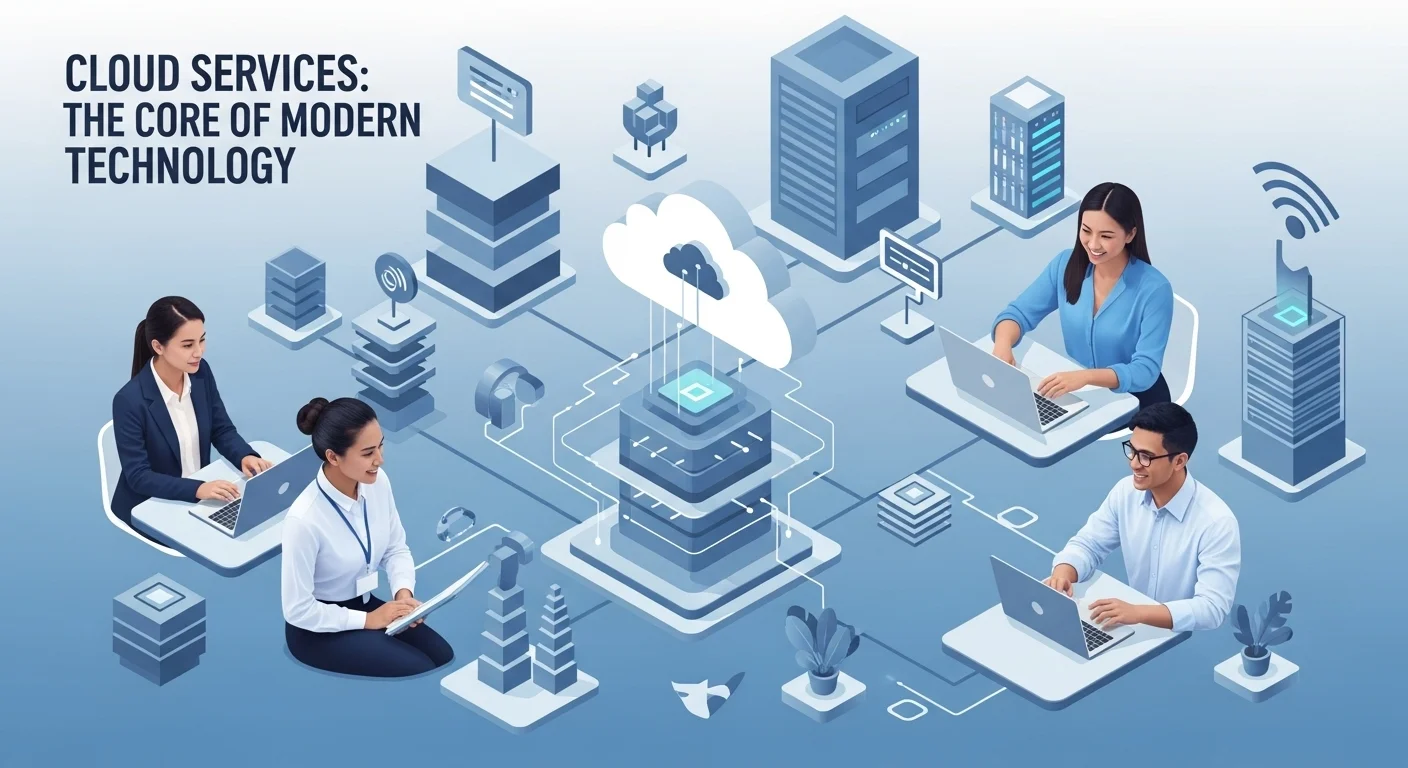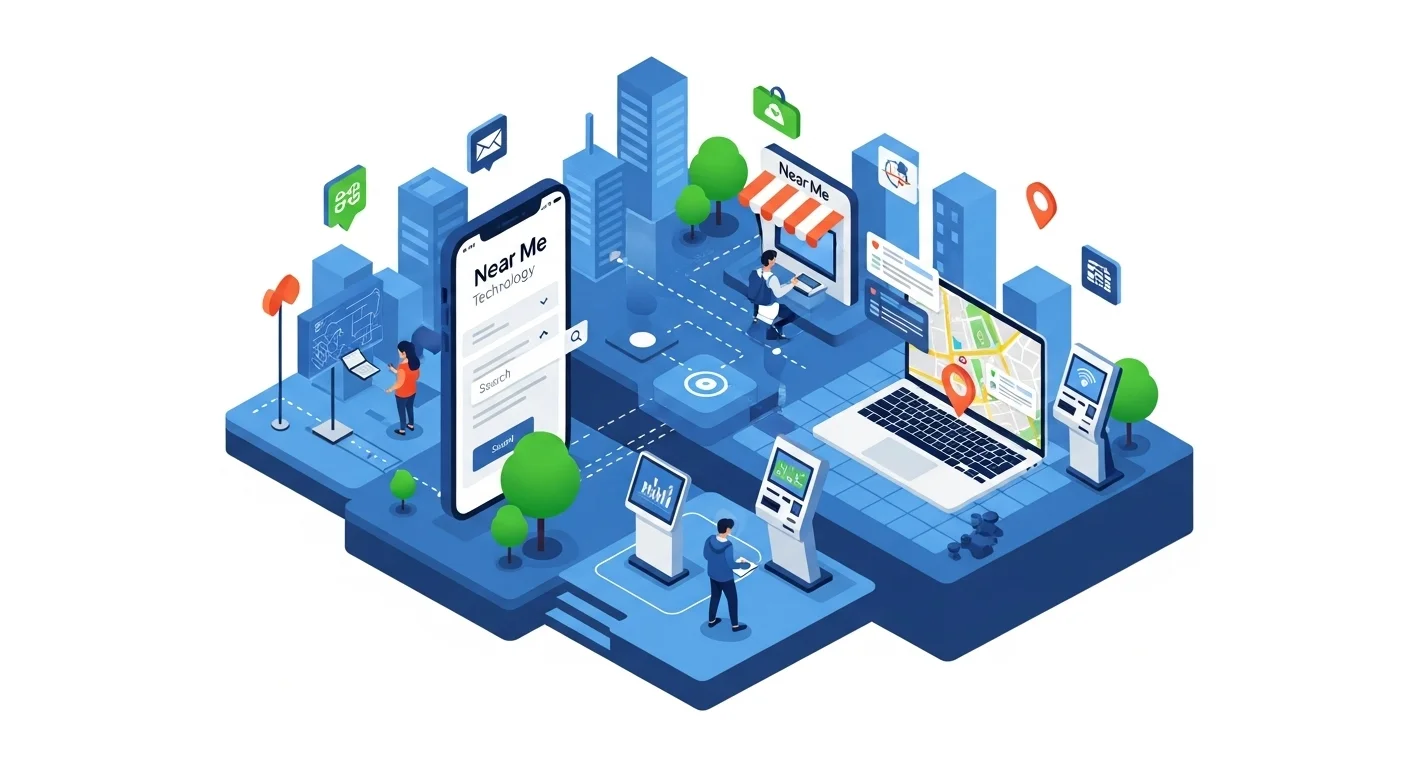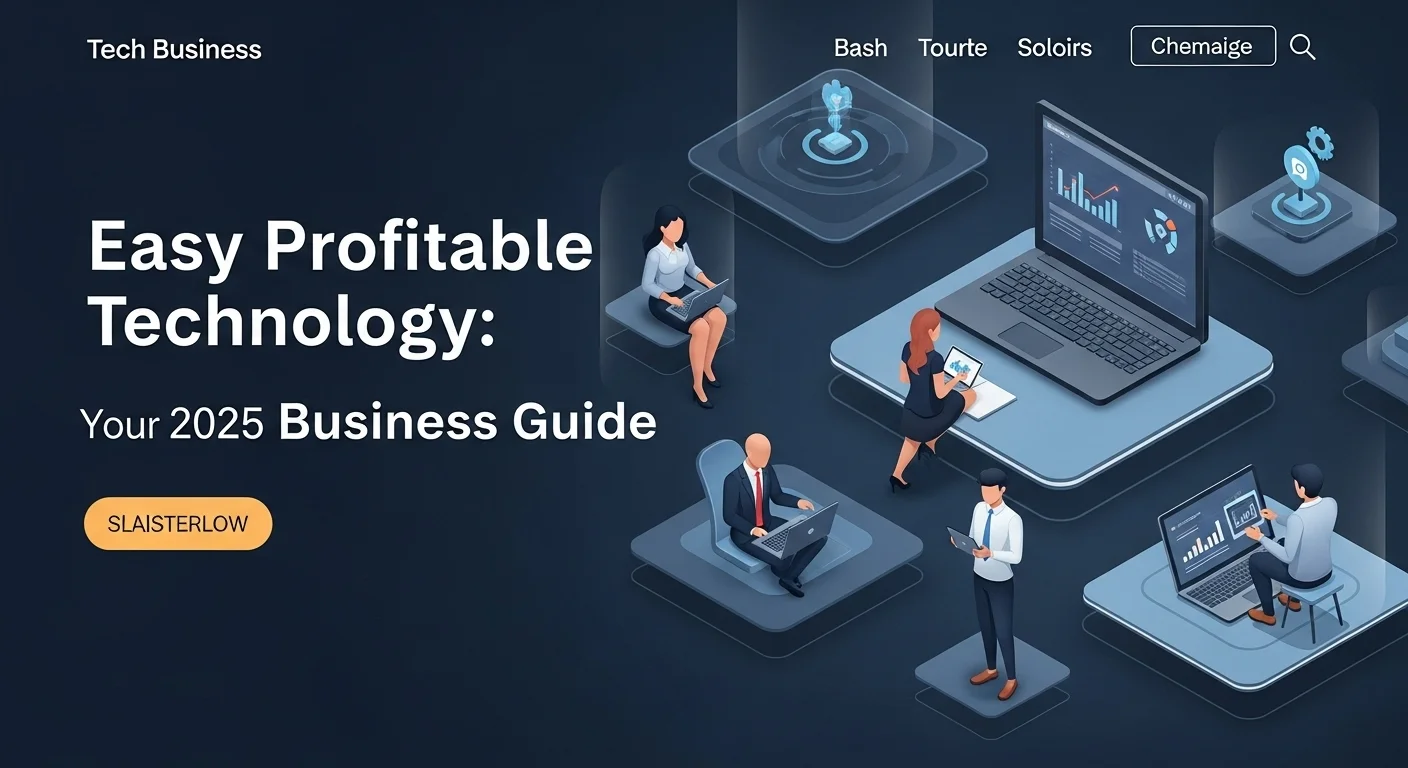Cloud Computing: The Core of Modern Business Technology

Executive Summary
Cloud Computing has fundamentally reshaped the technology landscape, becoming an indispensable tool for modern businesses. This article provides a comprehensive exploration of cloud technology, from its basic concepts to its most advanced applications. We delve into the critical service models—IaaS, PaaS, and SaaS—and explain their significance for companies aiming for scalability, efficiency, and innovation. Readers will gain insights into the benefits of cloud adoption, such as cost reduction, enhanced security, and unprecedented flexibility. We also tackle complex topics like cloud migration strategies, the role of a cloud computing VPS, and the emergence of DaaS (Desktop as a Service) in supporting remote workforces. Furthermore, we highlight the importance of continuous learning through cloud computing courses to stay competitive. This guide is designed for tech enthusiasts, IT professionals, and business leaders who want to harness the full potential of the cloud to drive growth and digital transformation. By understanding that cloud computing is the backbone of today's digital economy, you can make informed decisions to propel your organization forward.
Table of Contents
What is Cloud Computing and why is it important in Technology?
In the contemporary digital era, the term 'Cloud Computing' has transcended from being a mere buzzword to becoming a fundamental pillar of information technology infrastructure. But what exactly is it? At its core, cloud computing is the on-demand delivery of IT resources over the Internet with pay-as-you-go pricing. [3, 6] Instead of buying, owning, and maintaining physical data centers and servers, organizations can access technology services, such as computing power, storage, and databases, from a cloud provider like Amazon Web Services (AWS), Microsoft Azure, or Google Cloud. [3, 17] This paradigm shift has democratized access to enterprise-grade technology, allowing businesses of all sizes to innovate faster, operate more efficiently, and scale globally in minutes. The importance of cloud computing in technology cannot be overstated; it underpins everything from mobile applications and streaming services to complex operations in artificial intelligence (AI) and the Internet of Things (IoT).
The Fundamental Concepts: Service Models Explained
To truly grasp the cloud's impact, one must understand its primary service models, which are broadly categorized into three main types: Infrastructure as a Service (IaaS), Platform as a Service (PaaS), and Software as a Service (SaaS). Each model represents a different level of management and control, offering distinct advantages for various business needs.
Infrastructure as a Service (IaaS)
IaaS is the most basic category of cloud computing services. With IaaS, you rent IT infrastructure—servers and virtual machines (VMs), storage, networks, operating systems—from a cloud provider on a pay-as-you-go basis. [3] This model offers the highest level of flexibility and management control over your IT resources, making it the closest equivalent to a traditional on-premises data center. A prime example of an IaaS offering is a cloud computing vps (Virtual Private Server). A VPS provides a dedicated virtual environment on a shared physical server, giving users root access and the ability to configure their operating system and software stack. This is ideal for startups and small businesses that need the control of a dedicated server without the high cost of physical hardware. Businesses use IaaS to host websites, run applications, and store data, benefiting from the ability to scale resources up or down quickly in response to demand, a concept known as rapid elasticity. [3] The provider manages the physical infrastructure, while the user is responsible for the operating system, middleware, and applications.
Platform as a Service (PaaS)
PaaS provides a platform allowing customers to develop, run, and manage applications without the complexity of building and maintaining the infrastructure typically associated with developing and launching an app. [3] PaaS makes it easier for developers to create web or mobile apps quickly, without worrying about setting up or managing the underlying infrastructure of servers, storage, network, and databases. The cloud provider handles everything from the servers to the operating system and runtime environment. This frees up development teams to focus solely on their application code and innovation. Popular PaaS examples include AWS Elastic Beanstalk, Google App Engine, and Heroku. This model is particularly beneficial for organizations that want to streamline their development lifecycle, foster collaboration between teams, and accelerate time-to-market for new products and features. The skills required to leverage these platforms are often covered in specialized cloud computing courses, which focus on application deployment and management in a PaaS environment.
Software as a Service (SaaS)
SaaS is a method for delivering software applications over the Internet, on a subscription basis. [3] With SaaS, cloud providers host and manage the software application and underlying infrastructure and handle any maintenance, like software upgrades and security patching. Users connect to the application over the Internet, usually with a web browser on their phone, tablet, or PC. This is the most common cloud service model and includes well-known applications like Google Workspace, Microsoft 365, Salesforce, and Dropbox. The key benefit of SaaS is its simplicity. It eliminates the need for organizations to install and run applications on their own computers or in their own data centers. This removes the burden of hardware acquisition, provisioning, and maintenance, as well as software licensing, installation, and support. For businesses, this means lower upfront costs and predictable ongoing expenses.
The Emergence of DaaS: A Specialized Cloud Service
Beyond the three primary models, other specialized services have emerged. A notable example is daas in cloud computing, which stands for Desktop as a Service. DaaS is a cloud computing offering where a service provider delivers virtual desktops to end-users over the Internet, licensed with a per-user subscription. The provider takes on the responsibility for managing the back-end infrastructure, including storage, security, and upgrades. This service became particularly critical during the global shift to remote work. DaaS allows organizations to provide employees with secure access to their work desktops and applications from any device, anywhere. It enhances security by centralizing data, simplifies IT management by abstracting the physical endpoint, and provides a consistent user experience. Understanding DaaS is crucial for modern IT strategy, as it offers a scalable and flexible solution for enabling a hybrid workforce.
The Business Imperative: Why Cloud is Non-Negotiable
The adoption of cloud computing is no longer a choice but a business necessity. The benefits are transformative and impact every facet of an organization.
Cost Efficiency
Cloud computing eliminates the capital expense of buying hardware and software and setting up and running on-site data centers—the racks of servers, the round-the-clock electricity for power and cooling, and the IT experts for managing the infrastructure. It’s a shift from a Capital Expenditure (CapEx) model to an Operational Expenditure (OpEx) model, which is highly attractive for financial planning and allows businesses to avoid large upfront investments. [5]
Scalability and Flexibility
One of the hallmark benefits of the cloud is its ability to scale elastically. [6] In cloud terminology, that means delivering the right amount of IT resources—for example, more or less computing power, storage, and bandwidth—right when they are needed and from the right geographic location. This flexibility gives businesses a competitive edge, as they can respond to market changes and customer demands instantly without being constrained by physical infrastructure limitations.
Enhanced Security
Contrary to early skepticism, major cloud providers now offer a robust security posture that most businesses cannot achieve on their own. They provide a broad set of policies, technologies, and controls that strengthen security, helping to protect data, apps, and infrastructure from potential threats. [6] Centralized security management, automated threat detection, and dedicated teams of cybersecurity experts contribute to a more secure environment.
Disaster Recovery and Reliability
Data backup, disaster recovery, and business continuity are easier and less expensive with cloud computing. Because data can be mirrored at multiple redundant sites on the cloud provider’s network, it is protected and can be quickly restored in the event of a disaster. [6] This ensures that businesses can maintain operations with minimal downtime, a critical factor for customer trust and revenue stability.
Navigating the Transition: The Role of Cloud Migration
For established enterprises, moving to the cloud involves a strategic process known as cloud migration in cloud computing. This is the process of moving digital assets—applications, data, and IT processes—from an on-premises or legacy infrastructure to a cloud-based environment. A successful cloud migration requires careful planning, execution, and management. It is not merely a 'lift and shift' of existing systems. Organizations must assess their application portfolio, decide which workloads to move, choose the right cloud provider, and refactor or re-architect applications to take full advantage of cloud-native features. This journey, while complex, unlocks the full potential of cloud technology, leading to greater agility, innovation, and long-term value. The phrase cloud computing is often followed by 'a journey, not a destination', which perfectly encapsulates the continuous process of optimization and modernization that follows a migration. Investing in knowledge through cloud computing courses is essential for IT teams to develop the skills needed for a successful migration and to manage the new cloud environment effectively. This foundational understanding sets the stage for a deeper dive into the technical and strategic aspects of leveraging the cloud for business transformation.

Complete guide to Cloud Computing in Technology and Business Solutions
As we move beyond the fundamentals, a deeper understanding of cloud computing's technical and strategic dimensions is essential for any business aiming to thrive in the digital economy. This guide explores the practical application of cloud technology, comparing major providers, detailing migration methodologies, and showcasing how the cloud powers advanced business solutions. The core idea that cloud computing is a catalyst for innovation becomes increasingly clear as we examine its more complex facets.
The Titans of the Cloud: AWS vs. Azure vs. Google Cloud
The cloud market is dominated by three major players: Amazon Web Services (AWS), Microsoft Azure, and Google Cloud Platform (GCP). While they all offer a similar range of services, they have distinct strengths and cater to different market segments.
Amazon Web Services (AWS)
Launched in 2006, AWS is the oldest and most dominant player in the cloud market. [3, 17] It boasts the most extensive portfolio of services, covering everything from compute and storage to AI, IoT, and quantum computing. Its maturity translates into a highly reliable and feature-rich platform with a vast global infrastructure. Many businesses prefer AWS for its deep functionality and extensive community support. When considering a cloud computing vps, AWS's Elastic Compute Cloud (EC2) offers an unparalleled range of instance types, allowing for fine-tuned performance and cost optimization. Its comprehensive documentation and a wide array of third-party integrations make it a go-to choice for startups and enterprises alike.
Microsoft Azure
Microsoft Azure is the second-largest cloud provider and a strong competitor to AWS. [17] Its primary advantage lies in its seamless integration with Microsoft's existing enterprise software ecosystem, including Windows Server, Office 365, and Active Directory. This makes it an incredibly compelling choice for organizations already heavily invested in Microsoft products. Azure excels in hybrid cloud solutions, offering a consistent platform across on-premises data centers and the public cloud with tools like Azure Arc and Azure Stack. For businesses considering daas in cloud computing, Azure Virtual Desktop is a market-leading solution that integrates deeply with Microsoft 365, providing a secure and productive virtual desktop experience.
Google Cloud Platform (GCP)
Google Cloud Platform is known for its expertise in areas where Google itself excels: data analytics, machine learning, containerization (with Kubernetes, which originated at Google), and networking. [17] GCP's BigQuery, a serverless data warehouse, is a powerful tool for large-scale data analysis, and its AI Platform provides cutting-edge tools for building and deploying machine learning models. While its market share is smaller than AWS and Azure's, GCP is a formidable competitor, particularly for data-driven and cloud-native companies. Its pricing is often competitive, and it offers strong performance, making it an attractive option for high-performance computing tasks.
The Art and Science of Cloud Migration
A successful transition to the cloud is a complex undertaking. The process of cloud migration in cloud computing is not a one-size-fits-all endeavor. It requires a tailored strategy based on an organization's specific goals, resources, and application landscape. The most common migration strategies are often referred to as the '6 R's':
- Rehosting (Lift and Shift): This involves moving applications from an on-premises environment to the cloud with minimal or no changes. It's the fastest migration path and is often used for large-scale legacy migrations where re-architecting is not feasible. This is a common first step where a physical server might be moved to a cloud computing vps.
- Replatforming (Lift and Tinker): This strategy involves making a few cloud-specific optimizations to the application during the migration process to realize tangible benefits, but without changing the core architecture. This might include moving from a self-managed database to a managed cloud database service.
- Repurchasing (Drop and Shop): This means moving to a different product, typically a SaaS solution. For example, discarding a legacy CRM system in favor of Salesforce.
- Refactoring/Re-architecting: This is the most complex and resource-intensive strategy. It involves significantly modifying or re-imagining the application architecture to take full advantage of cloud-native features, such as serverless computing and microservices. While costly, this approach yields the greatest benefits in terms of performance, scalability, and cost efficiency.
- Retire: This involves identifying applications that are no longer needed and decommissioning them, which can reduce complexity and cost.
- Retain: In some cases, certain applications may not be suitable for the cloud due to regulatory, latency, or cost reasons. This strategy involves keeping these applications on-premises and exploring a hybrid cloud model.
Choosing the right strategy requires a thorough assessment of each application. The journey to the cloud is often iterative, starting with less critical applications to build experience and momentum. To navigate this complexity, many organizations invest in cloud computing courses for their IT staff to ensure they have the necessary skills to plan and execute a successful migration.
Powering Modern Business Solutions with the Cloud
The cloud is the engine behind many of the most transformative technologies and business models today. Its ability to provide massive, on-demand computing power and storage has unlocked new possibilities.
Big Data and Analytics
Before the cloud, storing and analyzing massive datasets was prohibitively expensive for most companies. Cloud platforms like AWS, Azure, and GCP offer powerful, scalable, and cost-effective solutions for big data. Services like Amazon S3 for storage, Apache Spark on EMR for processing, and Google BigQuery for analytics allow organizations to process petabytes of data to uncover insights, predict trends, and make data-driven decisions.
Artificial Intelligence (AI) and Machine Learning (ML)
The cloud has democratized AI and ML. [1] Cloud providers offer a suite of services that make it easier to build, train, and deploy ML models at scale. These range from pre-trained models for common tasks like image recognition and natural language processing to fully managed platforms for custom model development. This accessibility allows businesses of all sizes to integrate AI into their products and services, creating intelligent applications that can personalize customer experiences, automate processes, and optimize operations.
Internet of Things (IoT)
The IoT involves billions of devices collecting and transmitting data. The cloud provides the necessary backend infrastructure to ingest, store, process, and analyze this massive stream of data in real-time. Cloud IoT platforms offer services for device management, data ingestion, and analytics, enabling applications ranging from smart homes and connected cars to industrial automation and predictive maintenance.
Remote Work and Collaboration
The rise of remote work has been heavily enabled by cloud technologies. SaaS applications like Microsoft 365 and Google Workspace provide seamless collaboration tools. Furthermore, daas in cloud computing has become a cornerstone of secure remote access, allowing employees to access their corporate desktops from anywhere while ensuring data remains secure in the central cloud environment. This flexibility has become a critical component of business continuity and employee satisfaction.
In essence, the statement that cloud computing is the foundation of modern digital business is not an exaggeration. It provides the essential infrastructure, platforms, and services that enable innovation, agility, and resilience. Whether it's through a simple cloud computing vps for a small business website or a complex, multi-cloud architecture for a global enterprise, the cloud offers a spectrum of solutions to meet every technological and business need.

Tips and strategies for Cloud Computing to improve your Technology experience
Successfully adopting cloud computing goes beyond migration; it involves a continuous process of optimization, governance, and strategic planning. To truly harness the power of the cloud, businesses must adopt best practices, leverage the right tools, and stay informed about future trends. This section provides actionable tips and strategies to enhance your technology experience with the cloud, ensuring you maximize return on investment and maintain a competitive edge. The reality is that cloud computing is a dynamic field, and continuous improvement is key to success.
Best Practices for Cloud Management
Effective management is crucial for preventing cost overruns, security breaches, and performance bottlenecks. Implementing a robust governance framework from the outset is essential.
1. Cloud Security (SecOps)
Security in the cloud is a shared responsibility. While the cloud provider secures the cloud itself, the customer is responsible for security *in* the cloud. Key best practices include:
- Identity and Access Management (IAM): Implement the principle of least privilege. Grant users and services only the permissions they absolutely need to perform their tasks. Use multi-factor authentication (MFA) everywhere possible.
- Data Encryption: Encrypt data both at rest (in storage) and in transit (over the network). All major cloud providers offer robust encryption services.
- Network Security: Use virtual private clouds (VPCs), subnets, and security groups to create isolated network environments for your resources. Regularly audit firewall rules and network access controls.
- Threat Detection and Monitoring: Leverage cloud-native tools like AWS GuardDuty or Azure Sentinel to continuously monitor for malicious activity and unauthorized behavior.
2. Cost Management (FinOps)
Cloud costs can spiral out of control without diligent management. FinOps, or cloud financial operations, is a cultural practice that brings financial accountability to the variable spend model of the cloud.
- Visibility and Tagging: Implement a comprehensive tagging strategy for all your cloud resources. This allows you to allocate costs to specific projects, departments, or applications, providing clear visibility into where your money is going.
- Budgeting and Alerts: Set budgets for different projects or accounts and configure alerts to notify you when spending approaches or exceeds your defined thresholds.
- Right-Sizing and Optimization: Continuously analyze resource utilization and right-size your instances. Shut down idle resources, such as a developer's cloud computing vps over the weekend. Use cost-saving plans like AWS Savings Plans or Azure Reserved Instances for predictable workloads.
- Leverage Automation: Automate the process of identifying and terminating unused or underutilized resources to consistently control costs.
Choosing the Right Tools and Resources
The cloud ecosystem is vast, and selecting the right services and learning resources is critical.
- Invest in Education: The cloud landscape evolves rapidly. Continuous learning is non-negotiable for IT teams. Encourage and sponsor employees to take up-to-date cloud computing courses and pursue certifications from providers like AWS, Azure, and GCP. [18] These courses cover everything from fundamentals to advanced topics like secure cloud migration in cloud computing and architecting for high availability.
- Leverage Managed Services: Whenever possible, opt for managed services over self-managed solutions. For example, use a managed database service like Amazon RDS instead of running your own database on a virtual machine. This offloads the operational burden of maintenance, patching, and backups to the cloud provider, freeing up your team to focus on value-added activities.
- Explore DaaS for Workforce Flexibility: For businesses with a growing remote or hybrid workforce, seriously evaluate daas in cloud computing. Solutions like Azure Virtual Desktop or Amazon WorkSpaces can significantly simplify IT management, enhance security, and provide a consistent experience for all employees, regardless of their location or device.
Future-Proofing Your Cloud Strategy
The cloud is not a static technology. Staying ahead of emerging trends is vital for long-term success.
Serverless Computing
Serverless computing allows you to build and run applications and services without thinking about servers. With serverless, your application still runs on servers, but all the server management is done by the cloud provider. This model, exemplified by services like AWS Lambda and Azure Functions, offers incredible scalability and cost efficiency, as you only pay for the compute time you consume, down to the millisecond. Embracing a serverless-first mindset for new applications can lead to significant operational savings and increased agility.
Edge Computing
Edge computing is a distributed computing paradigm that brings computation and data storage closer to the sources of data. This is done to improve response times and save bandwidth. Instead of sending all data to a centralized cloud for processing, edge computing performs computation locally, on or near the device where data is created. This is particularly important for latency-sensitive applications like IoT, autonomous vehicles, and augmented reality. Cloud providers are extending their platforms to the edge with services like AWS Outposts and Azure Stack Edge.
AI and Automation in Cloud Operations (AIOps)
As cloud environments become more complex, managing them manually becomes impossible. AIOps leverages artificial intelligence and machine learning to automate and enhance IT operations. AIOps platforms can analyze vast amounts of data from monitoring tools to proactively identify patterns, predict potential issues before they occur, and automate remediation actions. This leads to more resilient, self-healing systems and allows IT teams to move from a reactive to a proactive operational model.
In conclusion, a successful cloud journey requires a holistic strategy that encompasses technology, people, and processes. By adhering to best practices in security and cost management, investing in continuous education through cloud computing courses, and keeping an eye on future trends, businesses can unlock the full transformative potential of the cloud. The statement that cloud computing is a journey is underscored by the need for constant adaptation and learning. For a deeper dive into modern IT infrastructure and strategies, resources like Gartner's IT research provide invaluable insights and analysis for technology leaders.
Expert Reviews & Testimonials
Sarah Johnson, Business Owner ⭐⭐⭐
The information about Cloud Computing is correct but I think they could add more practical examples for business owners like us.
Mike Chen, IT Consultant ⭐⭐⭐⭐
Useful article about Cloud Computing. It helped me better understand the topic, although some concepts could be explained more simply.
Emma Davis, Tech Expert ⭐⭐⭐⭐⭐
Excellent article! Very comprehensive on Cloud Computing. It helped me a lot for my specialization and I understood everything perfectly.



